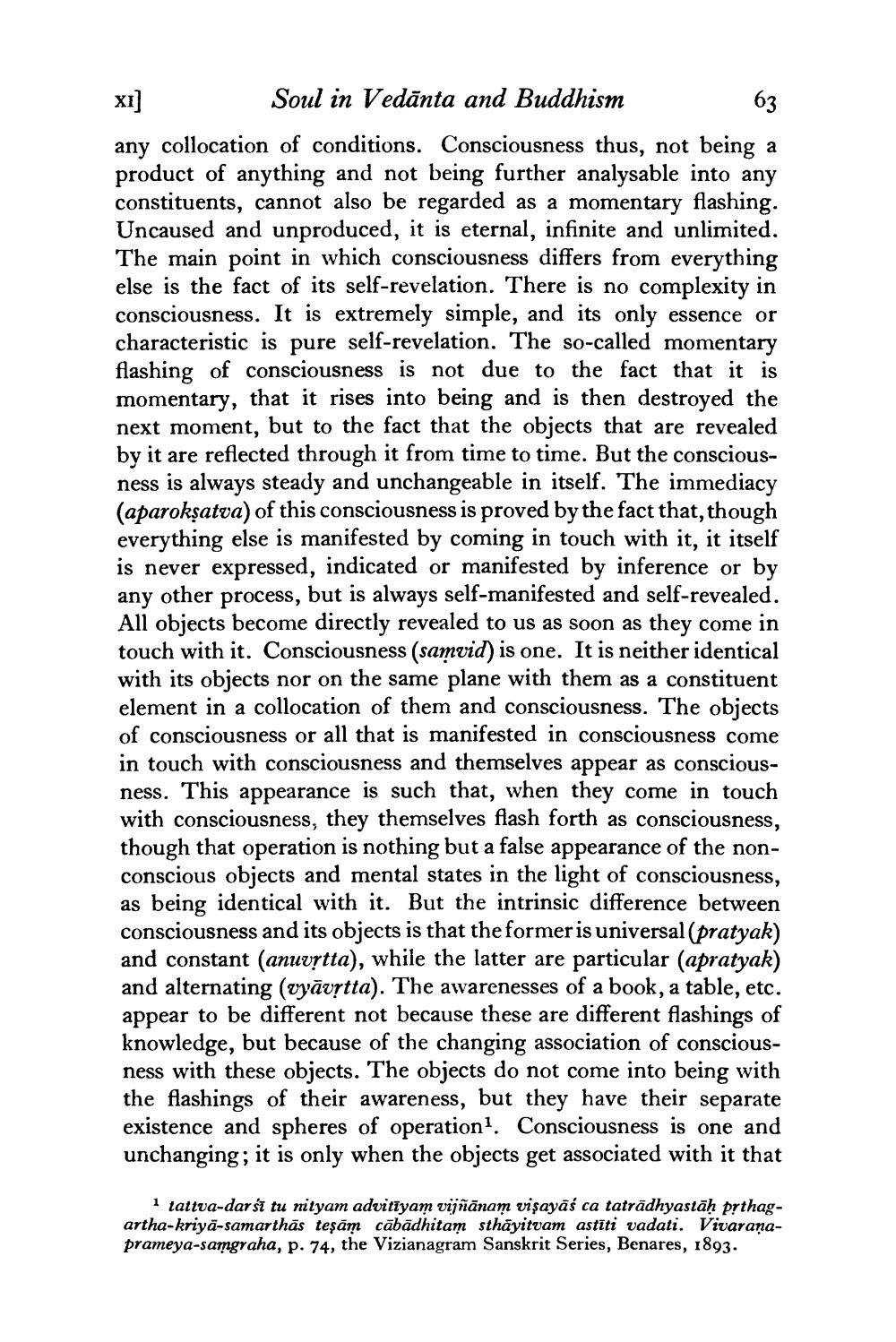________________
XI
1
63
Soul in Vedānta and Buddhism any collocation of conditions. Consciousness thus, not being a product of anything and not being further analysable into any constituents, cannot also be regarded as a momentary flashing. Uncaused and unproduced, it is eternal, infinite and unlimited. The main point in which consciousness differs from everything else is the fact of its self-revelation. There is no complexity in consciousness. It is extremely simple, and its only essence or characteristic is pure self-revelation. The so-called momentary flashing of consciousness is not due to the fact that it is momentary, that it rises into being and is then destroyed the next moment, but to the fact that the objects that are revealed by it are reflected through it from time to time. But the consciousness is always steady and unchangeable in itself. The immediacy (aparokşatva) of this consciousness is proved by the fact that, though everything else is manifested by coming in touch with it, it itself is never expressed, indicated or manifested by inference or by any other process, but is always self-manifested and self-revealed. All objects become directly revealed to us as soon as they come in touch with it. Consciousness (samvid) is one. It is neither identical with its objects nor on the same plane with them as a constituent element in a collocation of them and consciousness. The objects of consciousness or all that is manifested in consciousness come in touch with consciousness and themselves appear as consciousness. This appearance is such that, when they come in touch with consciousness, they themselves flash forth as consciousness, though that operation is nothing but a false appearance of the nonconscious objects and mental states in the light of consciousness, as being identical with it. But the intrinsic difference between consciousness and its objects is that the formeris universal (pratyak) and constant (anuvștta), while the latter are particular (apratyak) and alternating (vyāvýtta). The awarenesses of a book, a table, etc. appear to be different not because these are different flashings of knowledge, but because of the changing association of consciousness with these objects. The objects do not come into being with the flashings of their awareness, but they have their separate existence and spheres of operation". Consciousness is one and unchanging; it is only when the objects get associated with it that
1 tattva-darst tu nityam advitīyam vijñānam visayāś ca tatrādhyastāḥ prthagartha-kriya-samarthās teşām cābādhitam sthāyitvam astīti vadati. Vivaranaprameya-samgraha, p. 74, the Vizianagram Sanskrit Series, Benares, 1893.




